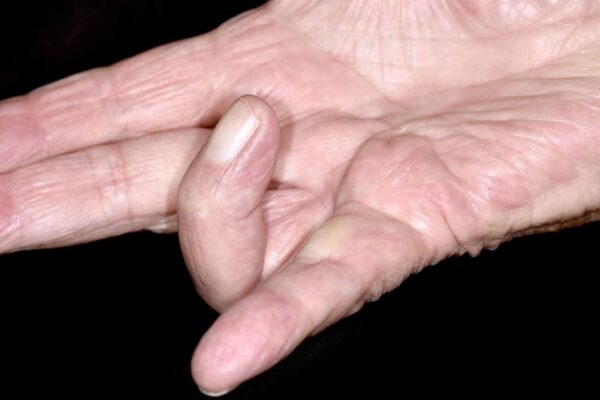What is Dupuytrens contracture?
Dupuytren’s contracture is a hand deformity that usually develops over several years. The condition affects a layer of tissue that lies under the skin of your palm. Knots of tissue form under the skin — eventually creating a thick cord that can pull one or more fingers into a bent position. The ring and little finger are most commonly affected, although the middle finger can also be affected and it can occur in both hands, although one hand is usually affected worse than the other. The condition is more common in older men of Northern European descent
What are the symptoms?
The resulting effect is the fingers cannot be fully straightened which can make everyday activities difficult. A number of treatments are available to slow the progression of Dupuytren’s contracture and relieve symptoms.
Dupuytren’s contracture typically progresses slowly, over years. The condition usually begins as a thickening of the skin on the palm of your hand. As it progresses, the skin on your palm might appear puckered or dimpled. A firm lump of tissue can form on your palm. This lump might be sensitive to the touch but usually is not painful.
In later stages of Dupuytren’s contracture, cords of tissue form under the skin on your palm and can extend up to your fingers. As these cords tighten, your fingers might be pulled toward your palm, sometimes severely.
Causes
Doctors don’t know what causes Dupuytren’s contracture. There’s no evidence that hand injuries or occupations that involve vibrations to the hands cause the condition.
Risk factors
A number of factors are believed to increase your risk of the disease, including:
- Dupuytren’s contracture occurs most commonly after the age of 50.
- Men are more likely to develop Dupuytren’s and to have more severe contractures than are women.
- People of Northern European descent are at higher risk of the disease.
- Family history-Dupuytren’s contracture often runs in families.
- Smoking is associated with an increased risk of Dupuytren’s contracture, perhaps because of microscopic changes within blood vessels caused by smoking.
- Alcohol intake also is associated with Dupuytren’s.
- People with diabetes are reported to have an increased risk of Dupuytren’s contracture.
Complications
Dupuytren’s contracture can make it difficult to perform certain functions using your hand. The thumb and index finger are usually not affected however as Dupuytren’s contracture progresses it can limit your ability to fully open your hand, grasp large objects or to get your hand into narrow places and into your pockets.
Treatment
This is usually surgery which can be done under local anaesthetic and you can leave hospital the same day. The recovery can be 4-12 weeks and there is a low risk of the condition returning again
Sources-
NHS site
Mayo clinic

